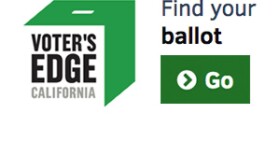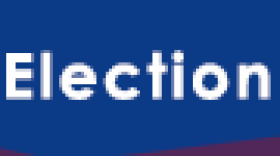Key Findings
- Outside spending groups have plowed more than $5.4 million into the race, almost all since Sept. 15.
- Such groups have dropped an average of $146,000 into the race every day between Sept. 15 and Oct. 21.
- Outside spending totaled nearly two-and-a-half times as much as the candidates’ own spending between Sept. 15 and Oct. 15.
- Nearly all outside spending in the race has been negative.
The past six weeks of campaigning in the white-hot race for the 52nd Congressional District in San Diego County has seen an explosion in negative advertising paid for by outside spending groups not attached to either candidate, according to an inewsource analysis of Federal Election Commission data.
The spending, directed overwhelmingly toward negative advertising, has dwarfed the candidates’ own expenditures in recent weeks.
Between Sept. 15 and Oct. 21, these groups have pumped at least $5,388,246 into the race. That’s 99 percent of all the money they’ve spent on the race.
That figure does not include money spent on so-called “issue ads,” political advertisements that do not expressly advocate for or against the reelection of a candidate and that do not have to be reported to the FEC. Such advertisements are favored by politically-active nonprofits because the practice allows them to skirt donor-disclosure requirements.
The contest in the 52nd — a district that runs north from Coronado to La Jolla and then east to include Carmel Valley, Scripps Ranch, Poway and Rancho Bernardo — pits first-term Democratic Rep. Scott Peters against Republican Carl DeMaio, an unsuccessful 2012 mayoral candidate. Both are former San Diego city councilmen.
Peters is considered one of the most endangered incumbents in the country. The race is one of only nine House races considered a “pure tossup” by the highly-regarded Rothenberg Political Report. The two candidates are in a virtual dead heat, according to a U-T San Diego/10News poll released last week.
A late rush
The crush of outside spending in recent weeks mimics a national pattern in close races, says Bill Allison, editorial director of the Sunlight Foundation, an open government advocacy group that tracks money’s influence in politics.
“If there are polls that are coming in late in the race that show there’s a chance for one of the two parties to pick up a seat, you will see a flood of last-minute money coming in,” Allison said.
The first volley of outside money targeting specific candidates occurred in the weeks preceding the June 3 primary when a coalition of conservative political groups spent $180,000 supporting GOP candidate Kirk Jorgensen in his run against DeMaio. After Jorgensen lost, such groups basically went quiet until Aug. 1.
That’s when the National Republican Congressional Committee — a party-run committee whose sole purpose is to support GOP candidates for the House of Representatives — spent $23,375 on survey research and media.
The next expenditure didn’t occur until Sept. 15, when the NRCC dropped $422,630 on advertisements and survey research over a two-day period. Days later, the NRCC’s Democratic counterpart — the Democratic Congressional Campaign Committee — answered, spending $320,000 on ads.
In an email, NRCC spokesman Tyler Houlton wrote that the committee’s role in the race was to counteract the spending by Democrat-aligned outside groups.
"We provide logistical and political support and advice to Carl DeMaio, though his campaign is run so well he rarely needs it,” Houlton wrote. “The reason we are spending so heavily in California’s 52nd Congressional District is to keep up with the DCCC and Nancy Pelosi’s House Majority PAC.”
House Majority PAC is a liberal super PAC with the stated goal of retaking the House of Representatives for the Democratic Party.
A spokesman for the DCCC declined to answer any specific questions about the committee’s role in the race.
Since the cash spigot busted open in mid-September, it’s never stopped.
Outside spending groups have dropped an average of $146,000 every day between Sept. 15 and Oct. 21.
Overwhelmingly negative
Spending by outside groups has been — for the most part — a drumbeat of negativity.
Through Oct. 21, outside groups have spent a total of $5,411,653 on expenses such as mailers, Internet and television ads and survey research.
According to the FEC data, 90 percent of all expenditures in the race have gone to oppose a candidate.
Carl Luna, a professor of politics at San Diego Mesa College, sees two reasons for the strategy.
“The candidates’ campaigns like to run the positive ads talking about their candidate’s background because they know their candidate best, and also it makes their candidate look like they’re taking the high road,” Luna said. “The negative ads can be run by the outside groups so that doesn’t throw dirt on their own candidate for being too negative, but also these outside groups really don’t know the candidates in the district.”
The outside spending group with the largest footprint in the race is the NRCC. The committee has spent $2,228,967 on the race, with 82 percent identified as opposing Peters.
In an email, Houlton, the group’s spokesman, defended the committee’s four-to-one ratio of negative to positive spending.
“It’s up to the voter to decide whether or not they view Scott Peters in a negative light,” Houlton wrote. “We’ve found from experience that highlighting Democrat’s voting records is an effective and fair way to communicate with voters.”
Not to be outdone in the negative advertising race, the DCCC — number two on the list of biggest outside spenders in the race — has poured $1,740,563 into the contest, all negative. The group hasn’t run any ads that focus on supporting Peters.
The Sunlight Foundation’s Allison says the negative tone of the ads can be attributed partly to the timing in the campaign cycle. The overwhelming majority of ads funded by outside groups come late in the campaign when the public already has a clear idea of who the candidates are. All that’s left is to convince voters that one candidate is worse than the other.
“You’re not trying to boost name recognition for your candidate — the one you’re supporting,” Allison said. “You’re really trying to tear down the opponent, and we see that in race after race.”
Exceeding campaigns’ spending
Unlike outside spending groups, the candidates’ campaigns don’t have to report expenditures every day as they are made. The latest spending figures for DeMaio and Peters come from a series of campaign finance reports that cover the period from July 1 through Oct. 15. Those reports show that the campaigns spent a combined $4,198,45 during that period, excluding refunds of contributions and loan repayments.
Over the same period, outside spending groups spent $4,476,299 on the race.
And unlike the spending totals for outside groups, the campaign figure includes all operating expenditures by the candidates — everything from food for volunteer phone bankers to payroll for campaign staff. The independent expenditures launched by outside spending groups are almost exclusively for costs related to advertising — things like ad production, purchases of television time, polling and postage for mailers.
And if one looks only at expenditures between Sept. 15, the date outside spending began in earnest, and Oct. 15, the closing date of candidates’ most recent reporting period, outside groups spent nearly two-and-a-half times as much as the candidates’ own campaigns — $4,452,892 to $1,857,28.
The Sunlight Foundation’s Allison says the phenomenon of outside groups outspending candidates is common in competitive House races. One reason is that FEC regulations require television stations to offer candidates the lowest possible rate for their ads. Stations are under no such obligation when outside groups come looking for air time, so they’ve got to spend more money to air the same number of ads as candidates.
Not that raising the required sums is particularly difficult for super PACs that — unlike candidate campaign committees — are allowed to accepted unlimited contributions from individuals, corporations, unions and almost any other source.
And campaigns spend money on everything from food for volunteer phone bankers to get-out-the-vote efforts. Not so with the outside groups.
“These groups — these super PACs — are basically commercial machines,” Allison said. “All they do is come in and buy air time and they can swamp the message of a candidate because that’s all they’re [doing].”
Luna, the Mesa College politics professor and a longtime observer of the region’s politics, said he’s never seen anything locally like the outside spending in the 52nd District.
“There really is no precedent for this much money coming into any race in San Diego from outside in such volume,” Luna said.









